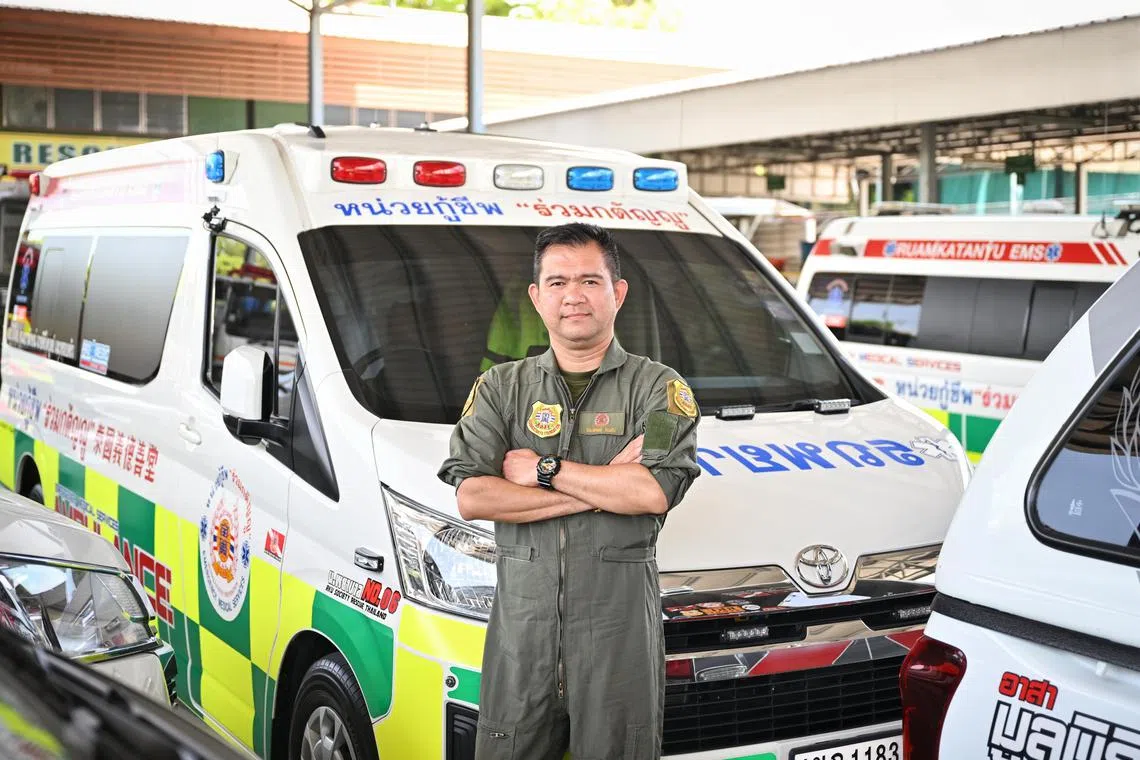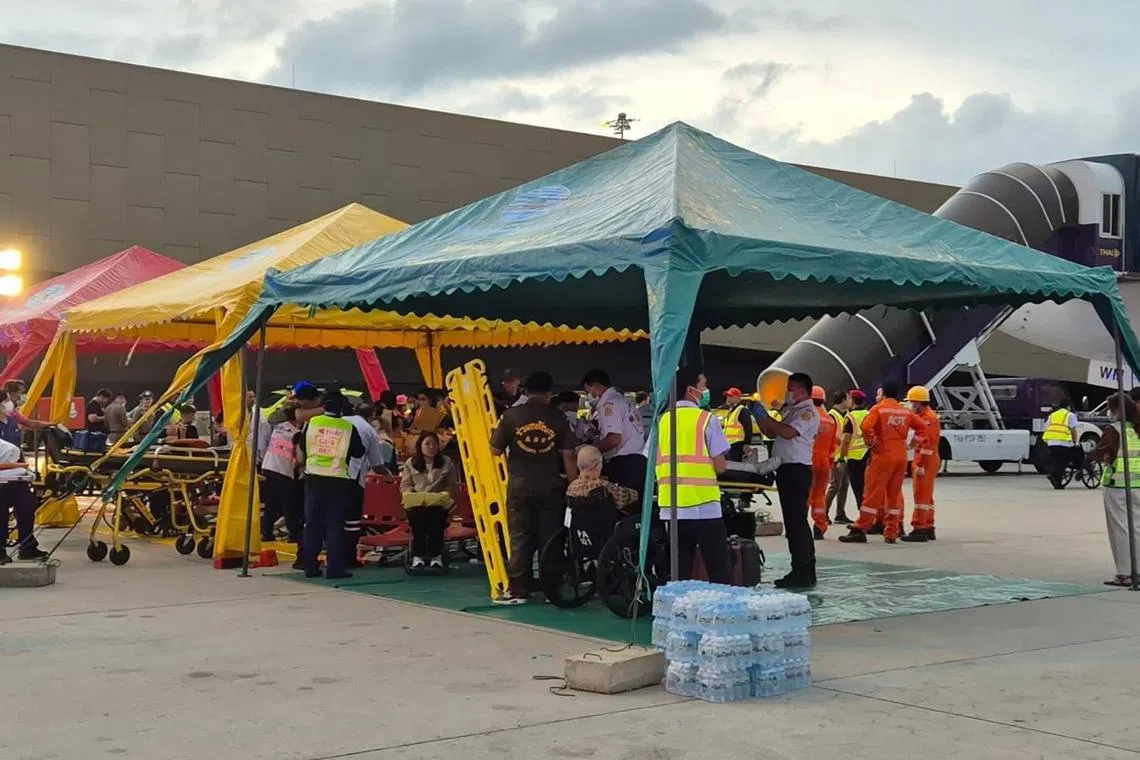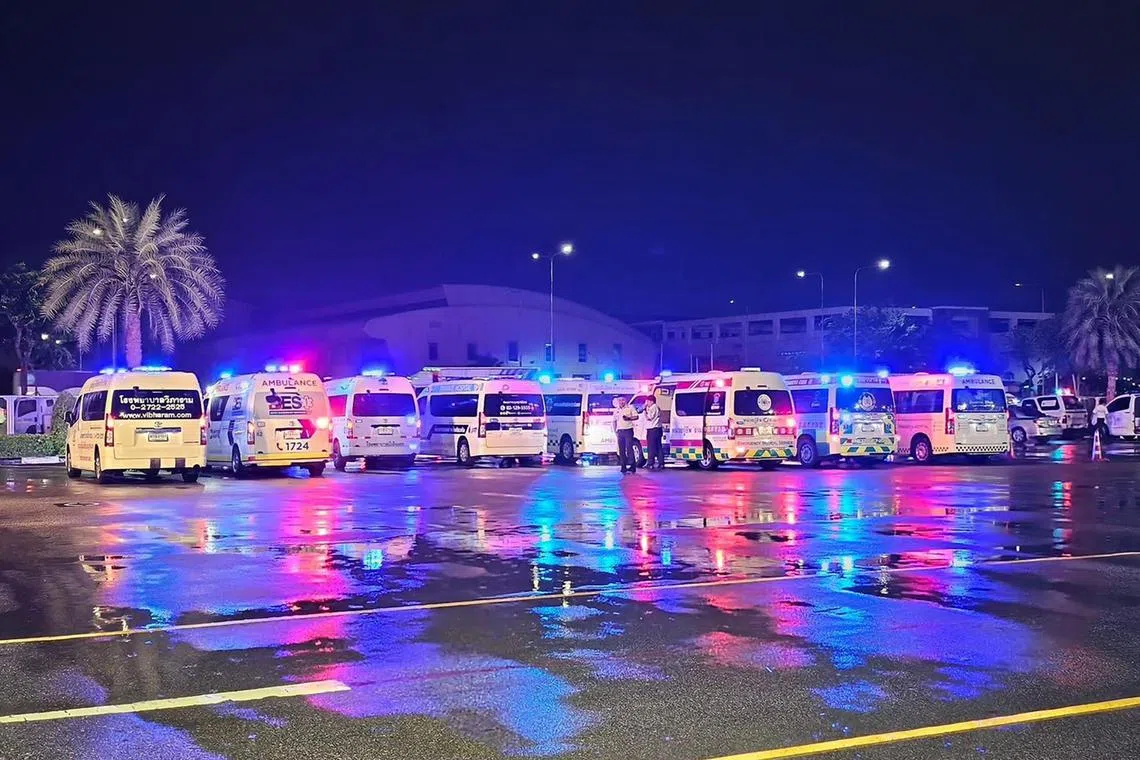Many looked panicked and were in pain: Thai rescue chief who aided SQ321 passengers on tarmac
Sign up now: Get ST's newsletters delivered to your inbox

Ruamkatanyu Foundation's chief of operations Piyalux Thinkaew said most of the injuries were fractures and cuts, but he observed that few had life-threatening injuries.
ST PHOTO: ARIFFIN JAMAR
Follow topic:
BANGKOK – Major fires, road accidents and even collapsed buildings are not new to Mr Piyalux Thinkaew, as he has been in the emergency and rescue field for nearly three decades.
But the call to be part of the medical operation attending to dozens of passengers injured in the turbulence-hit Singapore Airlines (SIA) plane
“The preliminary information we got was that there were injured passengers on a plane landing at the airport,” the Ruamkatanyu Foundation’s chief of operations told The Straits Times.
The 49-year-old had first heard about the incident over the radio communications system connected to Thailand’s emergency services.
“We had not been activated yet, but I decided to get ready.”
The Ruamkatanyu Foundation is a non-profit rescue and disaster organisation in Thailand staffed mainly by volunteers who provide medical and emergency support.
It also provides free coffins for the underprivileged or accident victims.
It has outposts across Bangkok and other provinces, but its main building is located near Suvarnabhumi Airport.
Mr Piyalux, who oversees and coordinates the foundation’s day-to-day emergency response, said he activated 10 ambulances and 45 people.
The team arrived at the airport within 10 minutes, just as the affected plane touched down on the runway.
Flight SQ321, which was bound for Singapore from London, was about three-quarters into its 13-hour journey when it encountered severe turbulence.
This wreaked havoc in the cabin, injuring some of the 211 passengers and 18 crew members on board the Boeing 777-300ER.
A 73-year-old British passenger had died
The pilot diverted the plane to make an emergency landing at Suvarnabhumi Airport at 3.45pm (4.45pm Singapore time).
Mr Piyalux estimated that about 30 ambulances and hundreds of people stood ready to receive the patients on the runway.
Passengers were evacuated from the plane and taken to tents set up on the tarmac to assess their condition.
“We were in the tents receiving these patients and helping to provide the necessary treatment,” Mr Piyalux said.
Most of the injuries were fractures and cuts, and few had life-threatening injuries, he said.
“I remember many of the passengers looking very panicked and many were in pain,” he said.
That day, the Ruamkatanyu Foundation ferried 25 injured passengers to hospital for treatment.
It also transported the body of the British man, later identified by the British press as musical theatre director Geoffrey Kitchen, to a morgue.

Passengers were evacuated from the stationary plane and taken to tents set up on the tarmac to assess their condition.
PHOTO: RUAMKATANYU FOUNDATION

Ruamkantanyu Foundation activated dozens of ambulances to ferry the patients to the hospitals.
PHOTO: RUAMKATANYU FOUNDATION
In an update on the evening of May 30, SIA said 25 remained hospitalised in Bangkok – down from the nearly 60 people warded on May 22.
It has been more than a week since the incident.
While the medical mission that day went relatively smoothly, Mr Piyalux said those involved – the Thai authorities, his foundation and other organisations – were still actively discussing how they can improve their response should a similar incident happen in the future.
“We want to iron out some issues, mostly to do with communication, so we can react even faster next time,” he said.
The incident has drawn considerable international attention, as it involved passengers from more than a dozen countries.
Mr Piyalux said: “Many countries have thanked Thailand for its help, and I’m proud to have been able to support the mission.”


